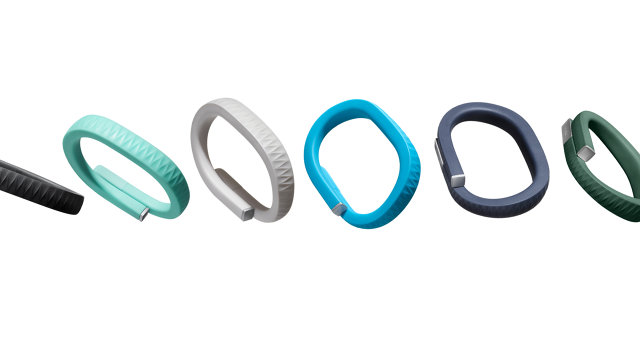It's Time To Look Beyond The Smartwatch
It basically takes two seconds of Googling to discover that a whole lot of people believe wearables are the future of technology. The most optimistic of those believers think wearables have the power to transform society in the same manner as PCs, the Internet, andsmartphones. And wearable technology is just getting to the point where it’s possible for products to be equally practical, capable, inventive, and essential.
But we haven’t gotten there yet. Right now, we’re still hung up on things with screens that you canwrap around your wrist--smartwatches and activity trackers. And while these devices have generally done what they promise to do, that promise has been unambitious. They’re practical and capable, but they’re hardly inventive or essential. Fitness bands can tell you how active you’ve been over any given span of time, but for the most part they can’t deliver meaningful insights to what your long-term activity patterns mean. Smartwatches have taken certain aspects ofsmartphone usage and made them more efficient or convenient, but they have yet to offer anything that you can’t ultimately do with a smartphone.
CLOSE X
Advertisement
Click Here to Learn More

There will be plenty of people who will benefit from smartwatches, but there won’t be many people who will be worse off for not having one.
Of course, every revolutionary innovation has had its universality and usefulness questioned in its infancy, and it's possible that the smartwatch as it exists now could evolve into the next piece of tech that people can’t function without. Maybe sending personalized vibrations to another person becomes the next communication craze. But for the most part, a smartwatch is just another screen that’s a conduit for information, and we’re starting to reach the outer limits of what can be done with that. To make wearables truly inventive and essential, designers are going to need to look beyond the smartwatch.
So many concepts and ideas related to wearables are focused on ways to interact with smartphones less--controlling your music, displaying the QR code for a boarding pass, or replying to a text message with your voice. Or there’s this idea that wearables have to be a thing we interact with at all.

But what if wearables focused more intently on the things smartphones can't do? Take Google’s planned contact lenses, which will help diabetics monitor their insulin levels, as an example. If you consider their impact in the near future, it’s just technology with a single function that serves a relatively small part of the population. But even then, if successful, it could become an essential product for diabetics, who will no longer have to constantly prick their fingers to get the same information.
Taking the longview is where projects like this get exciting and potentially revolutionary. Maybe it could lead to the platonic ideal of Google Glass where digital information is delivered over your natural field of vision in real-time. It would be the augmented reality experience nerds have dreamed of.
And sure, that's an idea which is wildly ambitious, but it provides a new interaction method that existing gadgets can't provide. That’s when innovation becomes essential.

Which is why, this week, we’re focusing on the future of wearables beyond the smartwatch. We’re looking at people who are not only designing and engineering products, but also considering new ways to use them. We have concepts from some of the best industrial design firms in the world imagining entirely new ways of using wearables. We talked to companies that are working to make current wearables more useful. And we look at businesses that are experimenting with how wearables fit into the workplace.
Hopefully that will make you--the designer, the entrepreneur, the engineer, the consumer--think about what wearables should be in the future, what they can be today, and what will make wearables a necessity in your life.